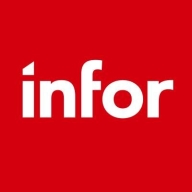

Infor LX and ERPNext are competing ERP systems catering to diverse business needs. ERPNext offers a robust set of features better suited for organizations seeking scalable, cloud-based solutions, while Infor LX shows superiority in specific functions tailored for manufacturing environments.
Features: Infor LX stands out with its strong capabilities in manufacturing, and supply chain management, and integrated financials, providing a comprehensive solution for complex operational processes. ERPNext shines with its modular architecture, covering core ERP functions along with CRM, HRM, and project management capabilities, with high customization potential. ERPNext’s openness makes it a dynamic alternative for businesses needing flexibility.
Ease of Deployment and Customer Service: ERPNext offers a cloud-based deployment model, providing seamless setup and ease of access for remote teams, alongside well-regarded online support resources for quick problem resolution. In contrast, Infor LX requires a more traditional, often complex installation process, leading to extended implementation phases, but benefits from a structured support network and on-premise setups for rigorous data security needs.
Pricing and ROI: ERPNext is favored for its cost-effectiveness, featuring lower initial setup costs and subscription-based pricing that minimizes upfront investment, presenting a quicker ROI, especially for SMEs. Conversely, Infor LX entails higher initial investment, reflecting its comprehensive and specialized offerings, delivering long-term value for specific industries.


ERPNext is an open-source ERP system known for its flexibility and comprehensive capabilities, tailored for various business needs. It integrates multiple business processes into a single platform, enabling seamless operations and efficient resource management for organizations.
ERPNext offers an extensive range of features designed to streamline business operations across sectors, including manufacturing, retail, and services. Its modular structure supports accounting, human resources, inventory, and project management. Recognized for adaptability, ERPNext allows users to customize and extend functionalities, although improvements are encouraged in reporting tools and system scalability.
What are the key features of ERPNext?ERPNext is leveraged across industries like manufacturing, where it assists in production planning and inventory oversight. In retail, it manages point-of-sale operations and customer engagement. Service industries use ERPNext for project management and resource allocation, ensuring efficient service delivery.
We monitor all ERP reviews to prevent fraudulent reviews and keep review quality high. We do not post reviews by company employees or direct competitors. We validate each review for authenticity via cross-reference with LinkedIn, and personal follow-up with the reviewer when necessary.